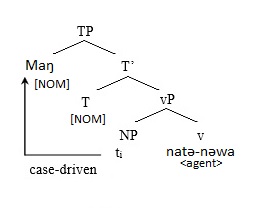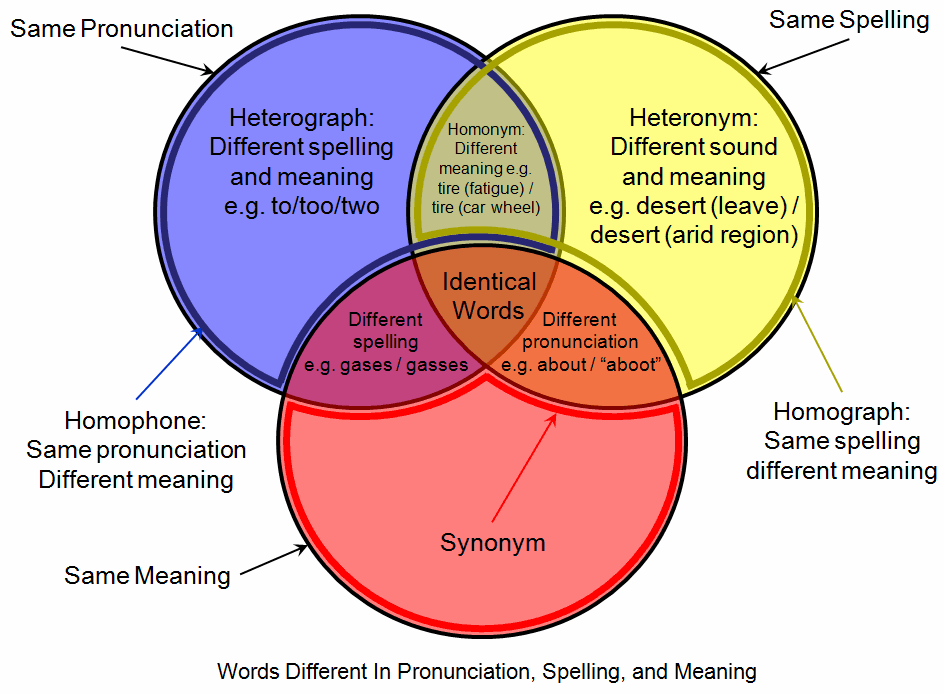|
Suprafix
In linguistics, a suprafix is a type of affix that gives a suprasegmental pattern (such as tone, stress, or nasalization) to either a neutral base or a base with a preexisting suprasegmental pattern. This affix will, then, convey a derivational or inflectional meaning.Eugene Nida, ''Morphology: The Descriptive Analysis of Words'', 2nd ed., Ann Arbor: University of Michigan Press 1949, p. 69. This suprasegmental pattern acts like segmental phonemes within a morpheme; the suprafix is a combination of suprasegmental phonemes, organized into a pattern, that creates a morpheme. For example, a number of African languages express tense aspect distinctions by tone.Eugene Nida, ''Morphology: The Descriptive Analysis of Words'', 2nd ed., Ann Arbor: University of Michigan Press 1949, p. 63, Problem 46. English has a process of changing stress on verbs to create nouns. History Driven by structural linguists in the United States, the suprafix was more frequently used by such linguists ... [...More Info...] [...Related Items...] OR: [Wikipedia] [Google] [Baidu] |
Affix
In linguistics, an affix is a morpheme that is attached to a word stem to form a new word or word form. The main two categories are Morphological derivation, derivational and inflectional affixes. Derivational affixes, such as ''un-'', ''-ation'', ''anti-'', ''pre-'' etc., introduce a semantic change to the word they are attached to. Inflectional affixes introduce a syntactic change, such as singular into plural (e.g. ''-(e)s''), or present simple grammatical tense, tense into present continuous or past tense by adding ''-ing'', ''-ed'' to an English word. All of them are bound morphemes by definition; prefixes and suffixes may be separable affixes. Affixes, infixes and their variations Changing a word by adding a morpheme at its beginning is called ''prefixation'', in the middle is called ''infixation'', and at the end is called ''suffixation''. ''Prefix'' and ''suffix'' may be subsumed under the term ''adfix'', in contrast to ''infix.'' When marking text for interlinear gl ... [...More Info...] [...Related Items...] OR: [Wikipedia] [Google] [Baidu] |
Linguistics
Linguistics is the scientific study of language. The areas of linguistic analysis are syntax (rules governing the structure of sentences), semantics (meaning), Morphology (linguistics), morphology (structure of words), phonetics (speech sounds and equivalent gestures in sign languages), phonology (the abstract sound system of a particular language, and analogous systems of sign languages), and pragmatics (how the context of use contributes to meaning). Subdisciplines such as biolinguistics (the study of the biological variables and evolution of language) and psycholinguistics (the study of psychological factors in human language) bridge many of these divisions. Linguistics encompasses Outline of linguistics, many branches and subfields that span both theoretical and practical applications. Theoretical linguistics is concerned with understanding the universal grammar, universal and Philosophy of language#Nature of language, fundamental nature of language and developing a general ... [...More Info...] [...Related Items...] OR: [Wikipedia] [Google] [Baidu] |
Volition (linguistics)
In linguistics, volition is a concept that distinguishes whether the subject, or agent of a particular sentence intended an action or not. Simply, it is the intentional or unintentional nature of an action.Tournadre, Nicolas. The Rhetorical Use of the Tibetan Ergative. 1991. Web. Volition concerns the idea of control and for the purposes outside of psychology and cognitive science Cognitive science is the interdisciplinary, scientific study of the mind and its processes. It examines the nature, the tasks, and the functions of cognition (in a broad sense). Mental faculties of concern to cognitive scientists include percep ..., is considered the same as intention in linguistics. Volition can then be expressed in a given language using a variety of possible methods. These sentence forms usually indicate that a given action has been done intentionally, or willingly. There are various ways of marking volition cross-linguistically. When using verbs of volition in English, like "w ... [...More Info...] [...Related Items...] OR: [Wikipedia] [Google] [Baidu] |
Aspirated Consonant
In phonetics, aspiration is a strong burst of breath that accompanies either the release or, in the case of preaspiration, the closure of some obstruents. In English, aspirated consonants are allophones in complementary distribution with their unaspirated counterparts, but in some other languages, notably most South Asian languages and East Asian languages, the difference is contrastive. Transcription In the International Phonetic Alphabet The International Phonetic Alphabet (IPA) is an alphabetic system of phonetic notation based primarily on the Latin script. It was devised by the International Phonetic Association in the late 19th century as a standard written representation ... (IPA), aspirated consonants are written using the symbols for voiceless consonants followed by the aspiration modifier letter , a superscript form of the symbol for the voiceless glottal fricative . For instance, represents the voiceless bilabial stop, and represents the aspirat ... [...More Info...] [...Related Items...] OR: [Wikipedia] [Google] [Baidu] |
Literary Language
Literary language is the Register (sociolinguistics), register of a language used when writing in a formal, academic writing, academic, or particularly polite tone; when speaking or writing in such a tone, it can also be known as formal language. It may be the Standard language, standardized variety of a language. It can sometimes differ noticeably from the various spoken language, spoken Variety (linguistics), lects, but the difference between literary and non-literary forms is greater in some languages than in others. If there is a strong divergence between a written form and the spoken vernacular, the language is said to exhibit diglossia. The understanding of the term differs from one linguistic tradition to another and is dependent on the terminological conventions adopted. Literary English For much of its history, there has been a distinction in the English language between an elevated literary language (written) and a colloquialism, colloquial or vernacular language (sp ... [...More Info...] [...Related Items...] OR: [Wikipedia] [Google] [Baidu] |
Bound And Free Morphemes
In linguistics, a bound morpheme is a morpheme (the elementary unit of morphosyntax) that can appear only as part of a larger expression, while a free morpheme (or unbound morpheme) is one that can stand alone. A bound morpheme is a type of bound form, and a free morpheme is a type of free form. Occurrence in isolation A form is a free form if it can occur in isolation as a complete utterance, e.g. ''Johnny is running'', or ''Johnny'', or ''running'' (this can occur as the answer to a question such as ''What is he doing?''). A form that cannot occur in isolation is a bound form, e.g. ''-y'', ''is'', and ''-ing'' (in ''Johnny is running''). Non-occurrence in isolation is given as the primary criterion for boundness in most linguistics textbooks. Roots and affixes Affixes are bound by definition. English language affixes are almost exclusively prefixes or suffixes: ''pre-'' in "precaution" and ''-ment'' in "shipment". Affixes may be inflectional, indicating how a certain word relat ... [...More Info...] [...Related Items...] OR: [Wikipedia] [Google] [Baidu] |
Wylie Transliteration
Wylie transliteration is a method for Transliteration, transliterating Tibetan script using only the letters available on a typical English-language typewriter. The system is named for the American scholar Turrell V. Wylie, who created the system and published it in a 1959 ''Harvard Journal of Asiatic Studies'' article. It has subsequently become a standard transliteration scheme in Tibetan studies, especially in the United States. Any Tibetic languages, Tibetan language romanization scheme faces the dilemma of whether it should seek to accurately reproduce the sounds of spoken Tibetan or the spelling of written Tibetan. These differ widely, as Tibetan orthography became fixed in the 11th century, while pronunciation continued to language change, evolve, comparable to the English orthography and French orthography, which reflect late medieval pronunciation. Previous transcription schemes sought to split the difference with the result that they achieved neither goal perfectly. Wyl ... [...More Info...] [...Related Items...] OR: [Wikipedia] [Google] [Baidu] |
Homograph
A homograph (from the , and , ) is a word that shares the same written form as another word but has a different meaning. However, some dictionaries insist that the words must also be pronounced differently, while the Oxford English Dictionary says that the words should also be of "different origin". In this vein, ''The Oxford Guide to Practical Lexicography'' lists various types of homographs, including those in which the words are discriminated by being in a different ''word class'', such as ''hit'', the verb ''to strike'', and ''hit'', the noun ''a strike''. If, when spoken, the meanings may be distinguished by different pronunciations, the words are also heteronyms. Words with the same writing ''and'' pronunciation (i.e. are both homographs and homophones) are considered homonyms. However, in a broader sense the term "homonym" may be applied to words with the same writing ''or'' pronunciation. Homograph disambiguation is critically important in speech synthesis, natural ... [...More Info...] [...Related Items...] OR: [Wikipedia] [Google] [Baidu] |
Lhasa Tibetan
Lhasa Tibetan or Standard Tibetan is a standardized dialect of Tibetan spoken by the people of Lhasa, the capital of the Tibetan Autonomous Region. It is an official language of the Tibet Autonomous Region. In the traditional "three-branched" classification of the Tibetic languages, the Lhasa dialect belongs to the Central Tibetan branch (the other two being Khams Tibetan and Amdo Tibetan). In terms of mutual intelligibility, speakers of Khams Tibetan are able to communicate at a basic level with Lhasa Tibetan, while Amdo speakers cannot. Both Lhasa Tibetan and Khams Tibetan evolved to become tonal and do not preserve the word-initial consonant clusters, which makes them very far from Classical Tibetan, especially when compared to the more conservative Amdo Tibetan. Registers Like many languages, Lhasa Tibetan has a variety of language registers: * ( Wylie: , literally " demotic language"): the vernacular speech. * ( Wylie: , "honorifics or deference, courtesy"): the ... [...More Info...] [...Related Items...] OR: [Wikipedia] [Google] [Baidu] |
Ngbaka Languages
The dozen Ngbaka languages are a family of Ubangian languages spoken in the Central African Republic and neighboring areas. It includes Pygmy languages such as Baka and Gundi. The most populous Ngbaka languages are Mbaka in the western branch, spoken by a quarter million people, and Mayogo in the eastern branch, spoken by half that number. Like the Mba languages, the Ngbaka languages are spoken across discontiguous areas scattered across various central African countries. Languages ''Glottolog ''Glottolog'' is an open-access online bibliographic database of the world's languages. In addition to listing linguistic materials ( grammars, articles, dictionaries) describing individual languages, the database also contains the most up-to-d ...'' 3.4, following Winkhart (2015),Winkhart, Benedikt. 2015. ''The reconstruction of Mundu-Baka''. Berlin: Humboldt-Universität zu Berlin MA thesis. gives the structure of the Baka-Mundu family as follows: * Eastern ** Mayogo–Bangba: B ... [...More Info...] [...Related Items...] OR: [Wikipedia] [Google] [Baidu] |
Democratic Republic Of The Congo
The Democratic Republic of the Congo (DRC), also known as the DR Congo, Congo-Kinshasa, or simply the Congo (the last ambiguously also referring to the neighbouring Republic of the Congo), is a country in Central Africa. By land area, it is the List of African countries by area, second-largest country in Africa and the List of countries and dependencies by area, 11th-largest in the world. With a population of around 112 million, the DR Congo is the most populous nominally List of countries and territories where French is an official language, Francophone country in the world. Belgian French, French is the official and most widely spoken language, though there are Languages of the Democratic Republic of the Congo, over 200 indigenous languages. The national capital and largest city is Kinshasa, which is also the economic center. The country is bordered by the Republic of the Congo, the Cabinda Province, Cabinda exclave of Angola, and the South Atlantic Ocean to the west; the Cen ... [...More Info...] [...Related Items...] OR: [Wikipedia] [Google] [Baidu] |





